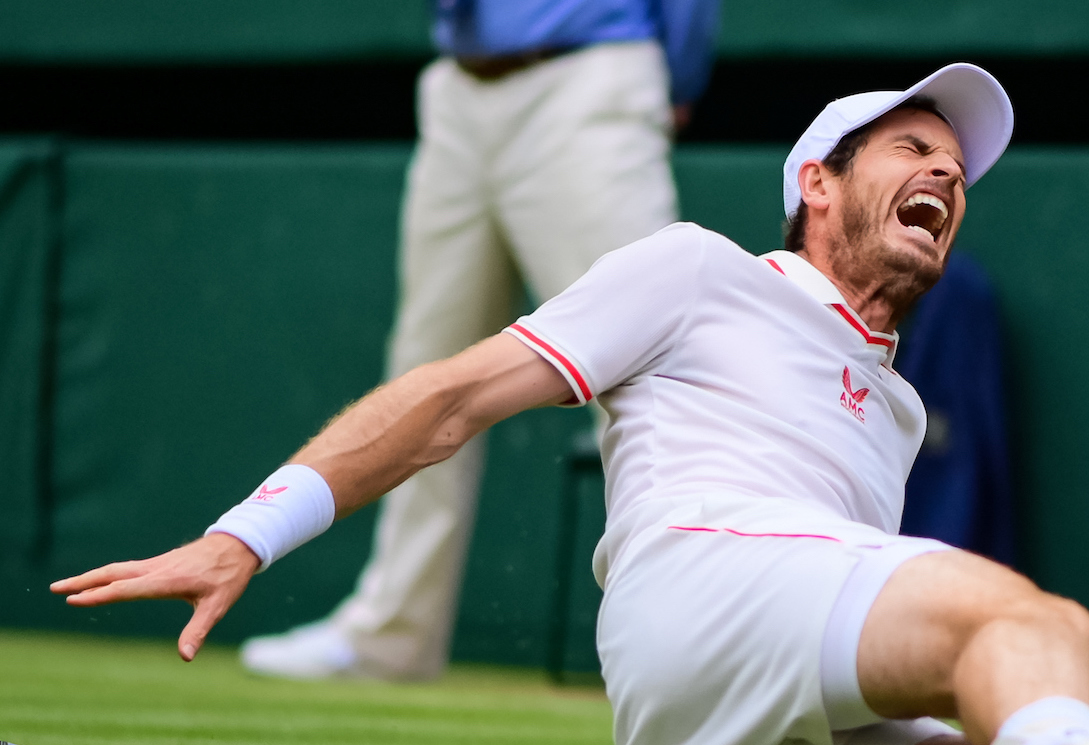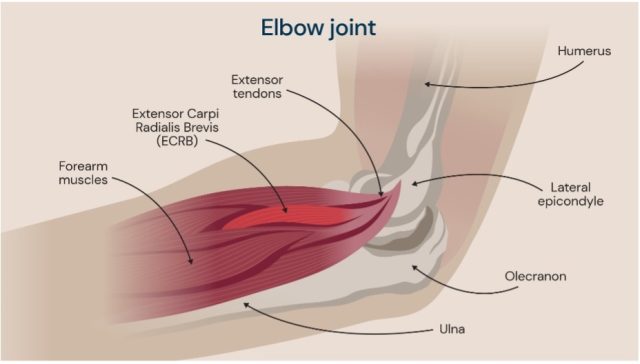
Tennis Elbow – what is it and how do you fix it?
Tennis elbow is as synonymous with tennis as Wimbledon and Roger Federer, but the lack of understanding of this ailment often leads to players having to take time out from the game for months on end. Tennishead reveals the facts thanks to a true expert.
With the arrival of Spring and Summer being just around the corner, we can look forward to the return of the oldest, and some may say the most prestigious tennis tournament in the world… Wimbledon.
128 able-bodied players and 32 wheelchair players will grace the green grass courts of South West London with the hope of winning the championships and cementing themselves in the history books of champions that have won before them.
Whilst some of us may feel that we could definitely give Novak a run for his money, for the majority, it’s the club’s annual championship that will be our Wimbledon. With this in mind, the last thing we want is an injury that hinders our game…
Tennis Elbow aka Lateral Epicondylalgia
 It goes by many names but I’m sure you’ll have heard of the dreaded Tennis Elbow. The elbow injury that no one wants in the sport that they love. But what exactly is it?
It goes by many names but I’m sure you’ll have heard of the dreaded Tennis Elbow. The elbow injury that no one wants in the sport that they love. But what exactly is it?
On the outside (lateral) aspect of your elbow, you have a group of muscles forming the wrist extensors. Their job is to extend the wrist and originate from the lateral epicondyle of the elbow – one of the bony points on the lateral elbow. These muscles are connected to the lateral epicondyle by a tendon and when this tendon becomes overworked, it inflames and causes Tennis Elbow. It is medically referred to as Lateral Epicondylalgia or sometimes a slightly outdated name of Lateral Epicondylitis.
Tennis Elbow can range from intermittent discomfort after prolonged exertion of the forearm to constant sharp stabbing pain and is characterised by lateral elbow pain that is tender to touch, pain with wrist extension (bending the wrist backwards) and gripping. Sometimes you can have swelling on the lateral aspect of your elbow but this is not always present.
So why is tennis elbow so common in tennis?
Whilst this injury is not exclusive to tennis, extension of the wrist is a very important movement with any swing of the racket in tennis, to allow for speed and manipulation of spin of the ball. It also involves prolonged periods of gripping, often in one hand for the majority of a game, and thus your wrist extensor muscles can end up working extremely hard in a concentrated period of time.
In its simplest form, the basic pathophysiology of any injury in most cases is that something has done too much or something new, too quickly. Your body is amazing at adaptation, when given enough time. Look at people who have ran a marathon after struggling to first run 5km. Gradual exposure to an activity or sport allows the tissues and bones within the body to become accustomed to this and develop the necessary improvements, such as increasing muscle mass or cardiovascular fitness, to allow you to be able to complete the task more efficiently.
However, when you do too much, too quickly, like go from playing no tennis over winter to suddenly playing 2-3 days per week, your body has to try to quickly adapt to this new level of sport and if you don’t give your body enough time with rest and optimum recovery, this is when an injury will occur.
There are a number of factors specific to tennis that can influence the risk of Tennis Elbow:
The frequency of playing and how long you play for – if you play a lot and for long periods of time, the wrist extensor muscles have to work very hard for a long time. If they are not conditioned to this, it may result in an overuse injury.
The racket – a heavier racket with a thicker grip will be more effortful to hold and require greater muscle activity throughout the match, placing more strain on the wrist extensors and potentially causing a strain. The string tension will also impact how much shock absorbance the racket does vs how much your elbow does.
Biomechanics of your stroke – if you are a player that uses a lot of wrist action during your stroke, you are using your wrist extensors a lot. Again, if your wrist is not conditioned to this level of muscle activity and joint movement, the wrist extensors may be at risk of injury.
Now you know what it is, how do you fix it?
If you have any concerns about your injury, you should always seek appropriate medical advice from a Physiotherapist or GP, to assess your elbow and give you bespoke treatment advice. That said, in general the following advice can be viewed as guidance on how to address tennis elbow.
In most cases with overuse injuries, a period of relative rest immediately will aid improvements with your symptoms. This may take the form of reducing how much tennis you play or stopping completely short-term. Using an ice pack wrapped in a towel to avoid ice directly on the skin will help with acute inflammation and pain by numbing the region.
Exercises to strengthen the wrist extensors will be vital in the acute rehabilitation and long-term prevention of Tennis Elbow. Resisted wrist extension exercises (as shown in image 2) can be completed to strengthen these muscles. Muscles adapt when they come under tension and fatigue therefore complete these exercises to muscular fatigue. However, do not push beyond an unmanageable amount of pain during and after these exercises. Rehabilitation of an injury sometimes will involve low levels of pain (often we say up to but no more than a 5/10 pain level) but speak with a Physiotherapist for specific guidance and a bespoke rehabilitation programme tailored to your needs.
Playing with a lighter racket with a grip that requires less force to hold will also reduce the amount of muscle activation required by your wrist extensors. As mentioned above, the tension of your strings will also impact on how much shock absorbance is done by the racket vs your elbow, so speak to a qualified stringer if you have any concerns.
As a Physiotherapist, I am frequently asked about the application of braces or joint supports. These devices can help provide additional support to injured areas and are commonly worn, for example Andy Murray’s infamous ankle braces, however in the average individual, we would encourage you to only wear these devices for short periods of time and to not depend upon them long-term as these can make the muscles around that area less active.
The NHS webpage on Tennis Elbow is a great resource for further information on the condition. Tennis elbow – NHS (www.nhs.uk)
Talk to a physiotherapy team today
If you are experiencing Tennis Elbow or any other joint or muscle pain, the support of our expert physiotherapy team (Physiotherapy) can help treat your injury and reduce your risk of injury going forwards, ensuring you’re fit and ready for the tennis season.
The team at St Thomas’ Hospital, London consists of Highly Specialist Musculoskeletal Physiotherapists, with experience treating the weekend warrior to working within professional sport. The clinic at St Thomas’ Hospital, London is equipped with the facilities that you need to take your rehabilitation to the next level and combat your injury.
Author’s bio: Paul Deane is a Highly Specialist Musculoskeletal Physiotherapist currently working at Guy’s and St Thomas’ NHS Foundation Trust, with a keen interest in sports injuries and rehabilitation. Outside of clinic, you can find Paul working on his serve or running to improve his on-court fitness.
![]() Join >> Receive $700/£600 of tennis gear from the Tennishead CLUB
Join >> Receive $700/£600 of tennis gear from the Tennishead CLUB
![]() Social >> Facebook, Twitter & YouTube
Social >> Facebook, Twitter & YouTube
![]() Read >> World’s best tennis magazine
Read >> World’s best tennis magazine
![]() Shop >> Lowest price tennis gear from our trusted partner
Shop >> Lowest price tennis gear from our trusted partner


